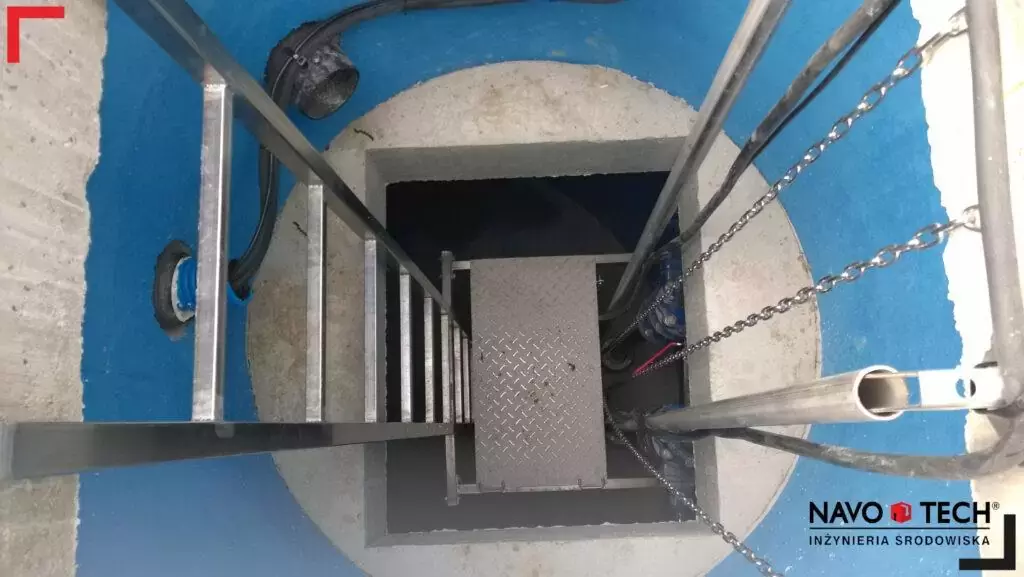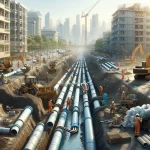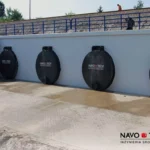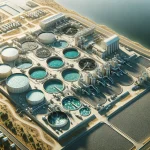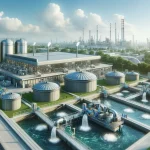The use of modern sewage treatment plants and pumping stations
Table of Contents:
Water purification
Sewage treatment plants they are used to purify water from pollutants before discharging them into rivers, lakes or the sea. Modern sewage treatment plants are equipped with various filters that effectively remove pollutants such as heavy metals, chemicals, oils, fats and other organic compounds. Moreover, it is also used anti-odor filterwhose task is to remove unpleasant odors.
Sewage treatment plants are used to purify water in various ways, depending on the type of contaminants present in the water and the quality requirements for a given application.
One of the basic methods of water purification by sewage treatment plants is mechanical filtration. It consists in passing water through various types of filters that mechanically retain larger impurities, such as sand, stones, branches or leaves.
For waters containing chemical impuritiessuch as pesticides, oils or heavy metals, it is necessary to use more advanced water purification methods. These devices can then use chemical processes such as coagulation and flocculation, which involve adding special chemical compounds to water that combine with pollutants and cause them to concentrate in the form of a float. This flotation can then be removed from the water by filtration or settling.
In some cases when the water is highly biologically pollutedpumping stations use biological processes such as biodegradation. It involves the use of special microorganisms that eat organic pollutants and convert them into less harmful substances.
Water transportation
Pumping stations are used to transport water from one place to another, e.g. from a water intake to a place of consumption. Modern pumping stations are equipped with advanced control systems that allow you to control the flow of water as well as its temperature and pressure.
They use different devices to transport water, depending on the specific application and technical conditions. Water pumps are one of the most commonly used devices for transporting water.
Water pumps they work by pumping water from one place to another using a pressure difference. The pumps can be driven electrically, mechanically or by hydraulics, and their type and design depends on specific requirements and technical conditions.
One of the types of water pumps used in pumping stations are centrifugal pumps. These pumps operate on the principle of an impeller that rotates inside the housing, which draws water and pumps it to a higher level. Centrifugal pumps can be used to pump both clean water and polluted water.
Another type of pumps used are submersible pumps. These pumps are placed in the water, which allows for more efficient collection and pumping of water from deeper levels. Submersible pumps are used to pump water from deep wells, water reservoirs or home wells.
They can also be used piston pumps. These pumps use a piston moving in a cylinder to pump water. Piston pumps are primarily used for pumping smaller volumes of water, for example for dewatering rooms or in industrial processes.
In addition to pumps, other devices are also used to transport water, such as pipelines, valves, culverts or channels. Pipelines are special pipes that are used to carry water from one place to another, and valves allow you to control the flow of water. Culverts, on the other hand, enable water to flow under obstacles such as roads or railways, and canals are special channels used to drain water from flood areas or to drain agricultural areas.
In the context of home sewage treatment plants, pumping stations play a key role, using a variety of technologies and devices to effectively transport and manage water. Household Sewage Treatment Plant uses pumping stations to transport sewage from the house to the treatment plant, as well as to distribute processed water to infiltration systems.
Wastewater disposal
Sewage pumping stations are used to transport sewage from the place of its origin to the sewage treatment plant.
The basic device is a sewage pump that pumps sewage from one place to another. These pumps use different operating principles, depending on the type of wastewater and technical requirements. When pumping sewage with low viscosity and low solids content, submersible pumps are primarily used, which are immersed directly in the sewage and pump it to the next part of the sewage system or to a treatment plant.
In the case of sewage with higher viscosity and content of solids, screw pumps are used, which are able to pump such sewage over longer distances. These pumps are characterized by high efficiency and the ability to pump wastewater with a high density and solids content.
Sewage pumping stations are also equipped with various types of devices for separating solids and liquids. Such devices include sieves and gratings, which are used to catch larger impurities, such as branches or paper, which can block pipelines or purification devices. It is used to remove smaller solid particles from impurities coalescing separator, which uses the principle of different densities of liquids and solids, which allows the capture of sand and other small impurities.
In sewage pumping stations, various types of measuring and control devices are also used to monitor the operating parameters of the devices and the quality of discharged sewage. Such devices include pressure sensors, flow sensors, level sensors and measuring stations that control the quality of water in the sewage system and at the exit from the treatment plant.
Water recirculation
In some industries, such as food production or the chemical industry, water is used many times. In that cases water pumping stations they enable the recirculation of water, i.e. its reuse. Water recirculation is the process of reusing water that has already been used and pumped. In practice, this means that the water is purified and disinfected and then reused in the industrial process.
Water recirculation process is carried out using special systems that are installed in water pumping stations. The most common methods of water recirculation are:
- membrane processing systemswhich allow the removal of impurities and chemicals from water using filtration membranes
- biological treatment systemsthat use biological processes to remove organic contaminants and chemicals from water
- water disinfection systemswhich allow the removal of bacteria and viruses from the water using disinfectants, such as chlorine or ozone.
After purification processes are carried out, the water goes to storage tanks, from where it can be pumped back to industrial or utility processes. The water recirculation process allows for a significant reduction in the amount of water taken from natural sources and at the same time reduces the amount of wastewater produced by industry, which has a positive impact on the natural environment.
Fire systems
These solutions are also used in fire protection systems, which are necessary in industry. Modern pumping stations are equipped with powerful pumps that enable quick filling of fire tanks and distribution of water to places at risk of fire.
Pumping stations are extremely important for fire protection systemsbecause they allow sufficient water to be supplied to the extinguishing points in the event of a fire. Fire protection systems are designed to prevent the spread of fire and minimize the damage caused by fire. The main task of fire protection systems is to detect fire, signal it and deliver the right amount of water to extinguish the fire or minimize its effects.
Pumping stations are essential to maintain water pressure at the right level and deliver water to firefighting points in real time. Fire protection systems require a continuous flow of water, and water pumping stations allow you to maintain pressure and water flow, regardless of the water level in the hydrant system or other fire extinguishing points.
Water pumping stations can be used in various fire protection systems, including:
- fire hydrant systemswhere water is stored in a tank and pumped to hydrants when needed
- fire sprinkler systems, in which water is supplied to the sprinkler nozzles and sprayed for extinguishing purposes
- fire protection foam systemswhere water is mixed with detergents and delivered to nozzles to create a foam that quickly extinguishes a fire.
Thanks to water pumping stations, fire protection systems can operate effectively and efficiently, minimizing fire damage and increasing the safety of people and property.
In a word of summary
Water handling equipment is extremely important in a variety of industries and applications. In industry as well as in fire protection systems, these devices play a key role in ensuring adequate water flow, maintaining pressure and effective wastewater disposal.
Water is one of the most important natural resources, and its transport and purification are essential in many industrial processes. Therefore, these devices are very important because they enable efficient movement of water from one place to anotherregardless of distance and differences in water level.
In industry, water pumping stations are used to transport water to production processes, cool machines and equipment, as well as to treat sewage and transport it to treatment plants. Thanks to this, these devices enable effective use of water, minimizing losses and reducing costs.
In fire protection systems, they are crucial for the effective operation of hydrant and sprinkler systems. Thanks to them, water is stored in tanks and delivered to firefighting stations when necessary, enabling quick and effective firefighting.
Author: M.Sc. Eng. Adam Głogowski

